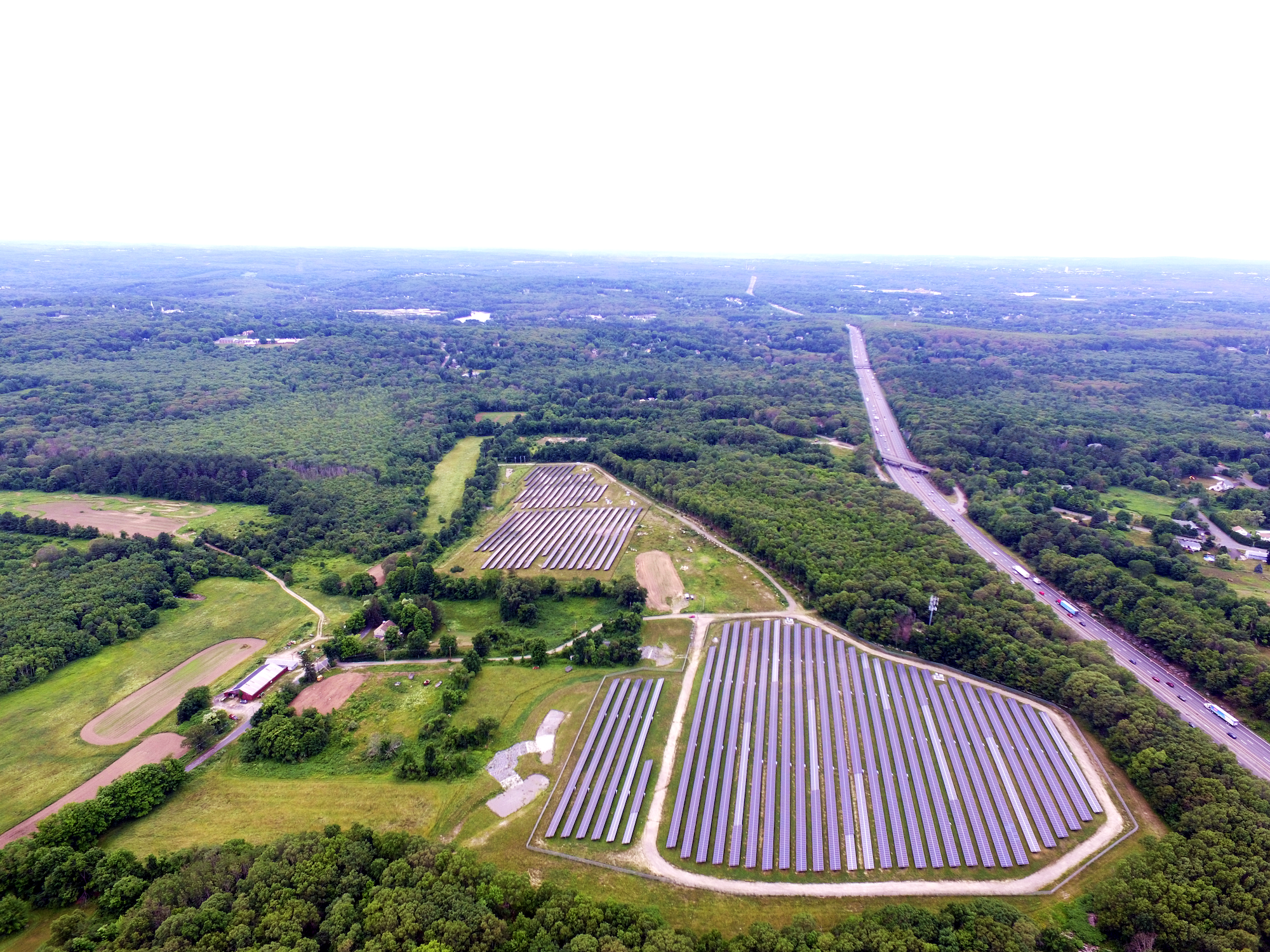
In New England, the roots of multigenerational farms run deep. Just ask the Knowlton family: they have been managing a variety of crops at their farm in Grafton, MA for over 150 years. Now as the Knowltons prepare to pass the torch again, those roots are getting deeper—and it’s in large part thanks to solar. Paul Knowlton, the current operator of Knowlton Farms, is dedicated to doing everything he can to make sure he passes down a viable farm for the next generation. Maybe that’s why he has been known to say that he would rather tend to his fields than take a vacation—that’s dedication, and that’s love.
However, besides Paul’s dedication to his craft, there are other factors influencing his strong work ethic. With short growing seasons, limited space, and rocky soils, New England farming is challenging. Farmers like Paul can’t afford to take much vacation time. In a given year, several parcels of land at Knowlton Farms may go unused due to the risk of crop failure and the high cost of farming livestock. But that land won’t remain unused any longer.

Paul Knowlton, Landowner & Farmer
In 2015, Knowlton Farms partnered with BlueWave and our partners to construct a 2.5 megawatt (MW) solar array on their unused farmland. Seeking a dependable and diversified source of income, Paul decided that solar was a perfect way to maximize the value of his land and prepare it for future generations. The 2015 installation was such a success that Paul teamed up with BlueWave again in 2017 to build an additional 3.7MW array bringing his total capacity to 6.2 megawatts over 13 acres of land. These installations have allowed Paul to expand the overall agricultural use of his land while minimizing the risk of significant revenue loss. Now in 2019, Paul has even more plans with BlueWave for solar development. For Knowlton Farms, cultivating solar is a sure thing—and sure things are rare in farming.
“These projects help to avoid an estimated 6,200 tons of carbon emissions annually. That’s the equivalent of taking over 1200 cars off the road every year."
The benefits of the 2015 and 2017 solar installations have extended far beyond Knowlton Farms. Local jobs were generated during construction, and clean, renewable energy was added to the electricity mix in Grafton and beyond. The environmental benefits of the Knowlton’s solar farms are significant, helping to avoid an estimated 6,200 tons of carbon emissions annually. According to the EPA Greenhouse Gas Emissions Calculator, that’s the equivalent of taking over 1200 cars off the road every year. In addition, local residents and businesses, four public housing authorities (located in Lowell, Tyngsborough, Webster, and Westborough), the Marlborough Community Development Authority, and the City of Haverhill were all able to sign-up as community solar subscribers on the projects, receiving electricity savings in the form of solar net metering credits. Altogether, these subscribers will save approximately $10M in electricity costs over the lifetime of the arrays—and they’ve paid nothing at all to participate.
The newest project the Knowltons are developing with BlueWave will demonstrate new levels of excellence in sustainable solar design by pioneering the “dual-use,” or solar + agriculture, model. Also known as “agrivoltaics,” this new approach to solar development allows solar and agricultural practices to coexist on the same plot of land. The panels will be built high enough for people and equipment to maneuver below and will be spaced and oriented to ensure that the crops receive enough sunlight to grow. BlueWave used their shade analysis tool—a tool developed by BlueWave for the MA Department of Energy Resources (DOER) and third-party validated by the Fraunhofer Institute for Solar Energy Systems (ISE)—to determine how to position the array for optimal sunlight for crop growth. To learn more about this tool, please see this webinar. BlueWave also drew on research from dual-use crop trials by Fraunhofer ISE in Germany and the UMass School of Agriculture in Amherst, MA, as well as guidance from experienced local farm consultants, to devise a farming plan and solar array design that can work together, improving each other’s functionality.

The Knowlton Farm arrays in Grafton, MA
The 2019 project will be divided into two arrays, one for vegetables and one for livestock. The vegetable array will support cultivation methods that minimize soil disturbance, utilize cover crops, implement crop rotation, and promote species diversity. The livestock array will encourage grazing methods that bolster soil quality and enhance stormwater retention. Rotating animals on meadows subdivided within the property, as advised by soil specialists certified by the Natural Resource Conservation Service, will also improve ecological diversity. Together these practices adhere to the principles of “regenerative agriculture,” an increasingly popular farming theory rooted in improving land quality that is garnering attention due to its ability to improve land’s capacity to sequester carbon, diversify ecology, and increase agricultural yields. For more information, please see this report written by the Rodale Institute titled “Regenerative Agriculture – A Down to Earth Solution for Global Warming”.
Thanks to these solar arrays, the Knowltons will reenter full-time farming after a decades-long hiatus. These new regenerative farming practices, combined with the financial benefits of solar, will pay future dividends for the farm both improving land quality and allowing for more crop output. To top it all off, the Knowltons plan to construct a commercial-scale greenhouse next to the vegetable array to enable year-round production. Knowlton Farms is a great example of what’s possible when you combine solar and agriculture. And the best part? Since these solar developments, younger Knowlton family members have expressed interest in farming full time, ensuring the Knowlton farming legacy will continue to thrive into the next generation and beyond.
If you’re a landowner and curious to learn more about what solar can do for your property, reach out to our development team at land@bluewavesolar.com.



